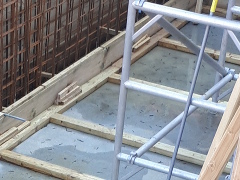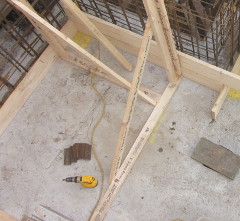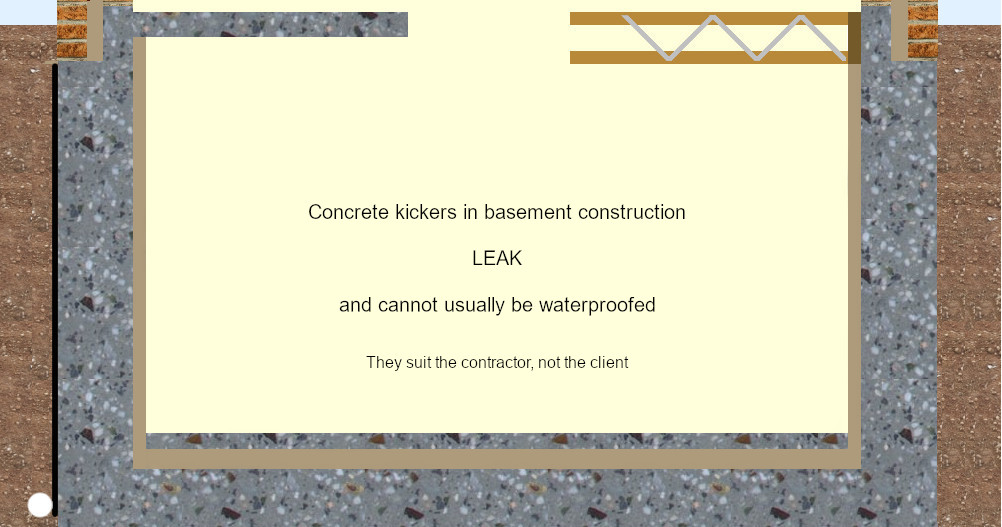
These timber props are fixed to the slab and made of 4x2 that is eventually reused in the building, making it very cheap.
|
|

A different way to fix the formwork in the correct position.
The uncropped photo and another of the same basement 3 weeks later is toward the end of this page.
|
|

This is a timber plate and concrete screws fixing it to the slab.
|
|

And another. Note the L shape upright made with two 4x2s screwed together. Very straight and strong.
|
|

